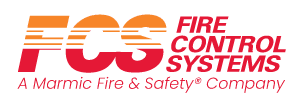Backflow preventers stop back-siphoning and backpressure from adding contaminated fluids or gases into a potable water supply system. Generally, the selection of the proper device to use is based upon the degree of hazard posed by the cross-connection. Additional considerations are based upon piping size, location, and the potential need to periodically test the devices to insure proper operation. Backflow preventers are required by law and must be installed in accordance with plumbing and building codes for your area. Some of the most common types are explained below.
Atmospheric Vacuum Breaker (AVB)
An AVB is an elbow-shaped device that has a valve on the inside that prevents water backflow. It is usually placed on a faucet valve, toilet, or flush valve to prevent the reverse flow of polluted water from entering the potable water supply.
Double Check Valves (DCV)
A DCV ensures that water only flows in a single direction so that contaminated water doesn’t flow back into the plumbing system once it has been used. There is a ball or gate valve assembled on each end that allows for isolation and testing. Normal and reverse flow is possible with this type of valve. It is used in connection with city water supplies, sewer systems, and water service connections.
Double Check Detector Assembly (DCDA)
A double check detector assembly protects the potable water supply line from possible contamination or pollution from a fire system, back-pressure from fire line booster pumps, stagnant “black water” that sits in fire lines over extended periods of time, and the addition of non-potable water through outside fire district connections. Also, it detects if there is any water being used in the fire line due to leaks or deliberate water theft.
Reduced Pressure Zone Device (RPZ)
An RPZ is used in a situation where the water backflow could seriously harm individuals. It has a chamber between two independent check valves that is maintained at a lower pressure than the supply pressure. Any excess pressure is relieved through an additional drain so that the chamber remains at a lower pressure than the water supply pressure.
Call Fire Control Systems to help you determine which backflow preventers are best for you!








